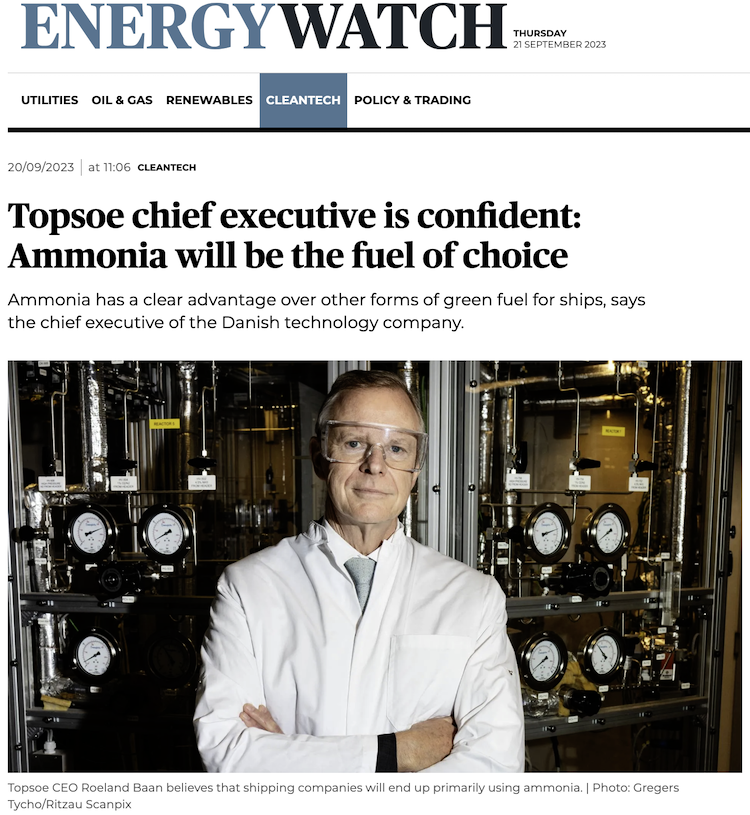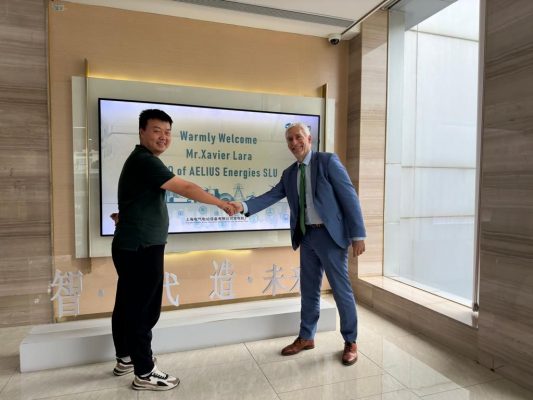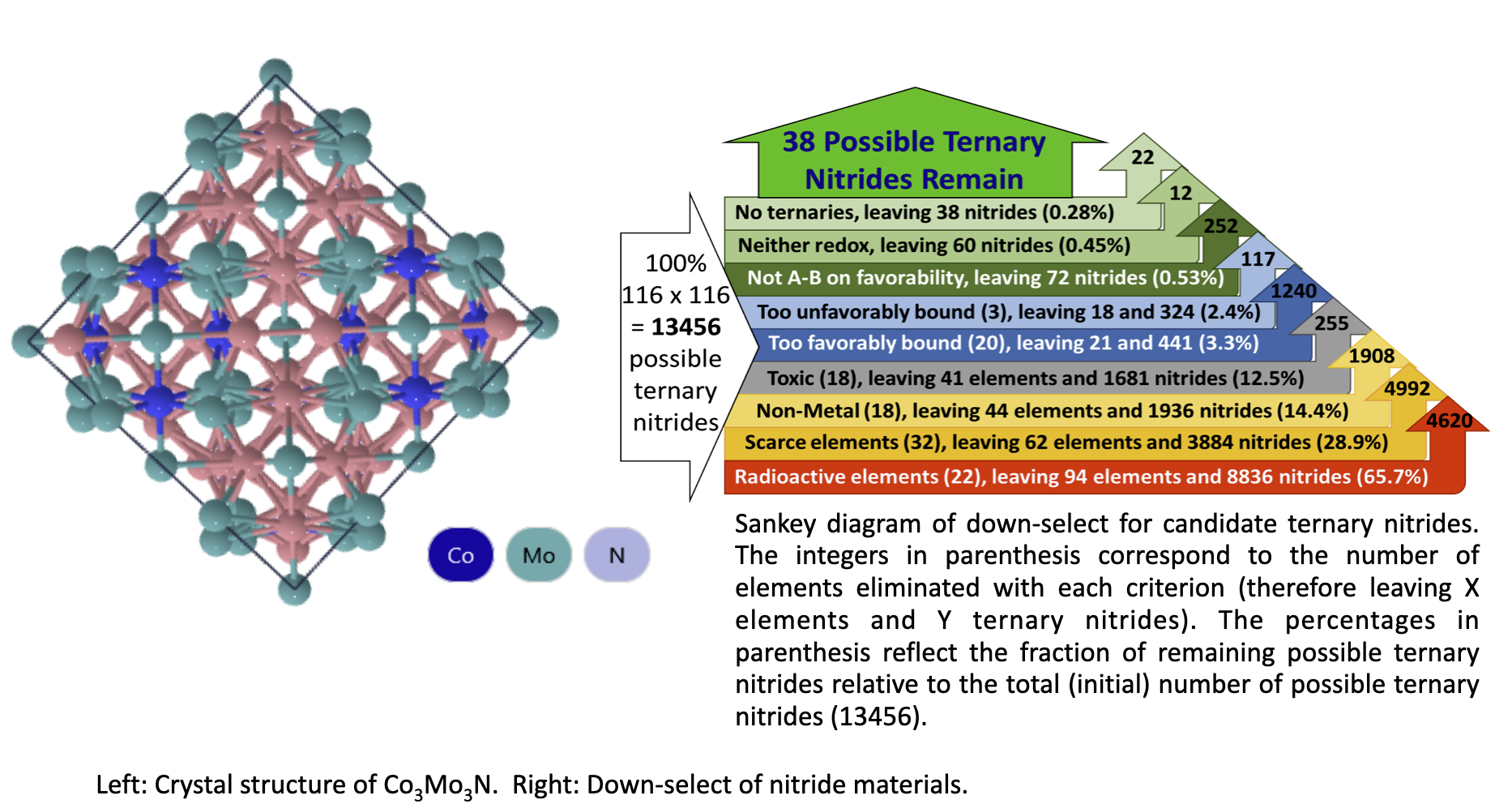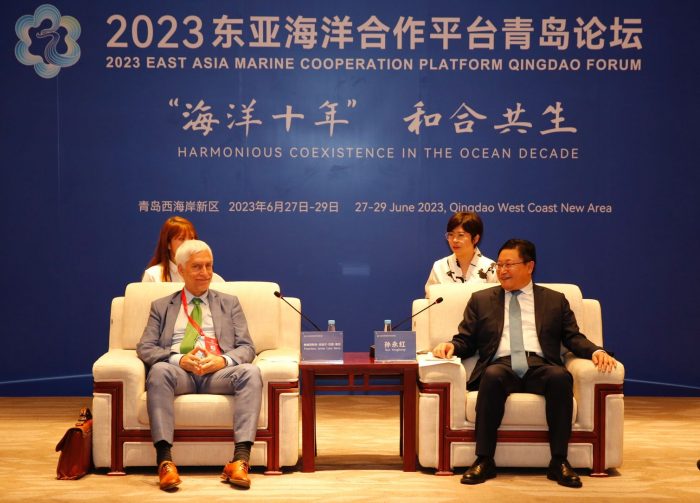
Cargo shipping will be very different in 2050. Increasingly, the shipping industry is looking to decarbonize and green ammonia research is funded globally from China to the UK
Green ammonia could be made sustainably using solar thermochemistry instead of the way it is made today in the fossil-fueled Haber-Bosch process, which taps fossil energy for the thermochemistry and the heat and the high pressure it requires, while emitting almost three tons of CO2 for each ton of ammonia it produces.
A research team from three US research institutions now has a patent pending for a novel process to make green ammonia using solar thermochemistry. (How solar fuels work: thermochemistry) The research is known as STAP (Solar Thermal Ammonia Production) and was funded by SETO; the US Department of Energy Solar Energies Technologies Office.
Dr. Andrea Ambrosini leads the researchers at Sandia National Laboratories in collaboration with Ellen Stechel, Co-Director, ASU LightWorks® at Arizona State University, and Peter Loutzenhiser, Associate Professor of Mechanical Engineering at Georgia Institute of Technology.
The team has developed a technology that can sustainably extract nitrogen from the air and source green hydrogen externally, and provide the heat needed to power the process from direct solar thermal energy instead of fossil fuels. Their results in early testing suggest that their process can potentially be more efficient than today’s fossil-fueled technology:
“The overall NH3 yield in this process, more than 50%, is 3-4 times higher than the established catalyzed Haber-Bosch process, without sacrificing the ability to operate at kinetically favored high temperatures, and with an order of magnitude less of pressure requirement,” noted one of their abstracts presented at the SolarPaces 2022 Conference; Solar Ammonia Production via Novel Two-step Thermochemical Looping of a Co3Mo3N:Co6Mo6N pair
Potential to decarbonize shipping
Green ammonia is an important area of solar thermochemistry research because the future market for green ammonia could be larger than fertilizer production. Agriculture and shipping are both next-generation targets for decarbonization.
China has the world’s largest shipbuilding industry. In July, after his mission to sell the world’s largest shipping industry on green ammonia to decarbonize shipping, Aelius Energy CEO Xavier Lara signed an agreement for the first green ammonia pilot, converting a 4,000 metric ton ship engine in the Qingdao port. Aelius Energies secured the world’s first conversion of a heavy fuel two-stroke ship engine to run on green ammonia.

CEOs at AELIUS Energies and Shanghai Electric cement partnership on making green hydrogen for green ammonia to decarbonize shipping: June 2023
“Yes, it’s a very big deal if you can decarbonize this,” said Dr. Ambrosini in a call from New Mexico. “it’s a big deal if you can do it, and the nice thing about our process using molybdenum cobalt nitride is that the molybdenum and cobalt in the material are cycled continuously. You don’t add new material every time you do the reaction.”
The team has demonstrated the feasibility of green ammonia production cycled in a pressurized, custom-designed lab bench scale Ammonia Synthesis Reactor (ASR) operating at an isothermal temperature of 650 °C and a constant pressure of just 2 MPa, much lower than the high-pressure Haber-Bosch process.
SolarPACES covered the team’s earlier feasibility study in To Make Green Ammonia, US Researchers Design a Novel Solar Process. At that time, the team had not yet identified the magic ingredient. Now they have.
An interesting working material; molybdenum cobalt nitride
To produce NH3 cyclically, the material must be able to repeatedly release and reincorporate nitrogen without substantial or irreversible physical and chemical degradation.
The key to this solar thermochemistry is a ternary nitride (nitrogen combined with two metals) that lends itself to this continuous cycling process. The nitride material can lose and regain nitrogen continuously in this cycling process.
“It’s only a small family of materials that will release some of its nitrogen without falling apart completely,” Ambrosini pointed out. “Our calculations determined that no binary nitrides met the thermodynamic qualifications. All the binaries fall into one of two camps; either they are too favorably bound, so they will easily form the nitride but won’t want to give away any N to make NH3. Or if they are too unfavorably bound, they will react to form NH3 but won’t want to reform the initial nitride. By selecting two diverse metals, we can find a balance.”
The two diverse metals they decided on are cobalt (Co) and molybdenum(Mo) because the material, Co3Mo3N can reduce to Co6Mo6N, losing up to 50% of its nitrogen, and back in a cycle, producing ammonia during each reduction.

“We’d hypothesized that the properties of ternary nitrides could be modified by the judicious choice of the two constituent metals,” she added. “If we can take one that’s favorable and one binary that’s not favorable and combine them into one material, can we kind of tweak those thermodynamics enough to make a material that will do both?”
The research literature on the properties of this compound was already available, so the researchers weren’t starting from scratch. Some previous research had focused on using it as a catalyst rather than as the working material actually performing the thermochemistry.
Here’s how it works:
In the first cycle, the compound Co3Mo3N is reduced to Co6Mo6N, and the released nitrogen reacts with hydrogen gas (H2) to produce ammonia (NH3). In the second reaction, Co6Mo6N is regenerated back to Co3Mo3N using N2 sourced from air (using solar heat) in the first cycle of the process, ready to start another round.
Co3Mo3N + 3/2 H2 → Co6Mo6N + NH3
Co6Mo6N + 1/2 N2 → 2 Co3Mo3N
What’s needed next – funding for reactor design and scale-up
“The goal of the project was to demonstrate a proof of concept. We did that, but there’s a lot left to solve,” Ambrosini explained. “We sit at the so-called “Valley of Death,” where the technology readiness level of the project is too high to be considered fundamental research but too low at TRL 3 to attract commercial investment. We have received a lot of interest but have not yet found that funding niche.”
Work is needed to advance the ammonia production step and successfully pair that with the N2 air separation step. At this stage, the team has patented the entire process conceptually. It has a systems analysis (covered in previous news at SolarPACES) but they still need the critical element, a fine-tuned design for the reactor, at least at a kilowatt scale for a test.
“And as anyone doing solar thermochemistry will tell you, reactor design is no easy feat,” she noted.
“We’ve demonstrated lab scale tests but can only run about 100 mg in that small reactor. The next step would be to try to integrate the process and show that we can scale up the nitride synthesis and the ammonia synthesis reactor to something on the order of 5 kW,” said Ambrosini.
With a successful test of the thermochemistry at this scale, they could then fine-tune the reactor design for a larger scale test which is needed to optimize the ammonia production kinetics and make sure that the two steps (nitrogen separation and ammonia production) will work together while regenerating the working materials in the entire looping cycle.

Xavier Lara in China June at the East Asia Marine Cooperation Platform Qingdao Forum Xavier Lara in China June 2023 gets commission to decarbonize a 4,000 ton ship
There has been a lot of focus on green hydrogen in US funding. Still, green ammonia research deserves attention, too, as it has its own decarbonization potential in shipping and agriculture. Green ammonia is a strategic green fuel that can be produced even in countries with no oil, as long as they have sufficient sunshine for solar thermochemistry.
Ammonia is also a potential hydrogen carrier. Liquifying H2 is energy intensive due to the required high pressure, and liquified H2 is prone to losses due to boil-off and leakage. Ammonia has a high storage density, is more easily liquified, and unlike hydrogen, an ammonia transport infrastructure already exists. For all these reasons – agriculture, transportation, and hydrogen storage – solar-produced green ammonia can significantly mitigate CO2 emissions from industry.
It does not release carbon emissions when combusted, further boosting its green credentials. It’s this unique combination of characteristics that make solar-produced green ammonia a promising solution for the storage and transport of renewable energy.
More reading:
Just Published at ACS: Synthesis and Structural Study of Substituted Ternary Nitrides for Ammonia Production
About STAP: Solar Thermal Ammonia Production (STAP)
SolarPACES conference paper: Solar-Thermal Ammonia Production: A Renewable, Carbon-Neutral Route to Ammonia via Concentrating Solar Thermochemistry
SolarPACES Conference presentation: Solar-Thermal Ammonia Production: A Renewable, Carbon-Neutral Route to Ammonia via Concentrating Solar Thermochemistry














































